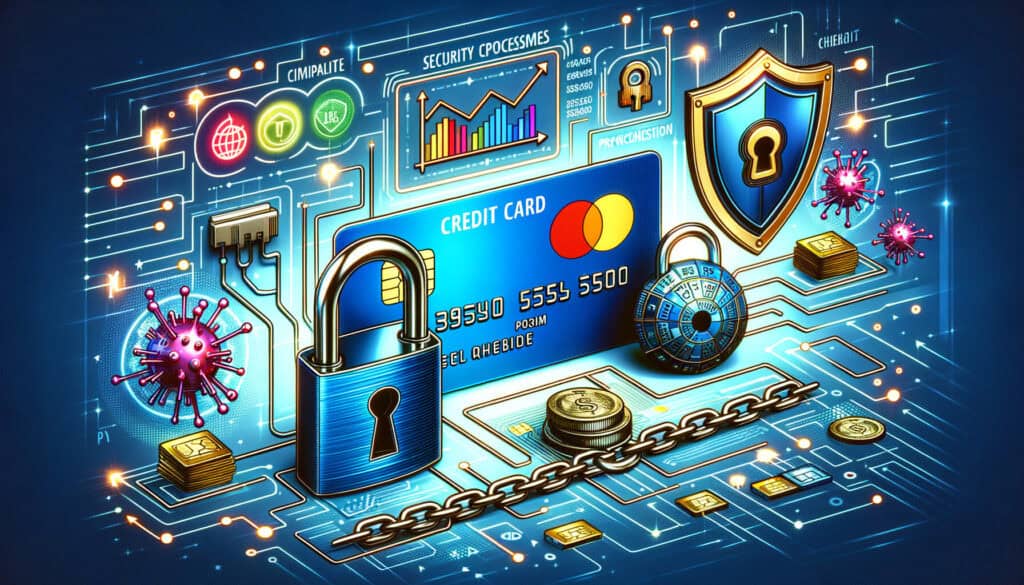
By Amanda Hoglund November 10, 2024
Credit card processing has become an integral part of our daily lives, enabling us to make purchases conveniently and securely. But have you ever wondered how credit card transactions actually work behind the scenes? In this comprehensive article, we will delve into the intricacies of credit card processing, exploring the various components and processes involved.
The Role of Merchant Accounts in Credit Card Processing
To understand credit card processing, it is essential to grasp the concept of a merchant account. A merchant account is a type of bank account that allows businesses to accept credit card payments. When a customer makes a purchase using their credit card, the funds are first deposited into the merchant account before being transferred to the business’s regular bank account. This intermediary step ensures a smooth and secure transaction process.
Merchant accounts are typically provided by acquiring banks or payment processors. Acquiring banks are financial institutions that partner with businesses to facilitate credit card transactions. Payment processors, on the other hand, act as intermediaries between the acquiring bank and the business, handling the technical aspects of the transaction process.
Understanding the Payment Gateway: A Key Component in Credit Card Processing

One crucial component of credit card processing is the payment gateway. A payment gateway is a software application that securely transmits credit card information from the customer to the acquiring bank or payment processor. It acts as a bridge between the customer, the merchant, and the financial institutions involved.
When a customer enters their credit card details during an online purchase, the payment gateway encrypts the information to protect it from unauthorized access. It then sends the encrypted data to the acquiring bank or payment processor for further processing. The payment gateway plays a vital role in ensuring the security and integrity of credit card transactions.
The Process of Authorization and Verification in Credit Card Transactions

Once the payment gateway receives the encrypted credit card information, it initiates the process of authorization and verification. This process involves several steps to ensure that the transaction is valid and that the customer has sufficient funds to complete the purchase.
First, the payment gateway sends the encrypted credit card details to the acquiring bank or payment processor. The acquiring bank then forwards the information to the credit card network, such as Visa or Mastercard. The credit card network verifies the card details and checks if the customer has enough credit or funds available.
If the verification is successful, the credit card network sends an authorization code back to the acquiring bank or payment processor. This code confirms that the transaction is approved and that the funds can be transferred. The acquiring bank or payment processor then relays the authorization code to the payment gateway, which completes the transaction and notifies the merchant of the successful payment.
The Importance of Security Measures in Credit Card Processing

Security is of paramount importance in credit card processing to protect sensitive customer information and prevent fraudulent activities. Various security measures are implemented throughout the transaction process to ensure the integrity and confidentiality of credit card data.
Encryption is a fundamental security measure used in credit card processing. When a customer enters their credit card details, the payment gateway encrypts the information using advanced cryptographic algorithms. This encryption process converts the data into an unreadable format, making it virtually impossible for unauthorized individuals to decipher.
Tokenization is another security measure employed in credit card processing. Tokenization involves replacing the actual credit card details with a unique identifier called a token. This token is used throughout the transaction process, eliminating the need to store sensitive card information. Even if a hacker gains access to the token, it is useless without the corresponding encryption key.
Clearing and Settlement: How Funds are Transferred in Credit Card Processing

Once a credit card transaction is authorized and verified, the process of clearing and settlement begins. Clearing refers to the process of exchanging information between the acquiring bank, the credit card network, and the issuing bank. Settlement, on the other hand, involves the actual transfer of funds from the customer’s bank account to the merchant’s account.
During the clearing process, the acquiring bank sends the transaction details to the credit card network, which then forwards the information to the issuing bank. The issuing bank deducts the transaction amount from the customer’s account and sends the funds to the acquiring bank. This exchange of information and funds typically occurs within a few business days.
Interchange Fees: Exploring the Costs Associated with Credit Card Processing
Credit card processing is not without its costs. Merchants are required to pay interchange fees, which are fees charged by the credit card networks and issuing banks for processing transactions. Interchange fees are typically a percentage of the transaction amount, with additional fees for certain types of transactions, such as international or rewards-based purchases.
The specific interchange fees vary depending on factors such as the type of credit card used, the merchant’s industry, and the transaction volume. These fees can significantly impact a merchant’s profitability, especially for businesses with high transaction volumes or low-profit margins. It is crucial for merchants to carefully analyze and negotiate their interchange fees to optimize their financial performance.
Different Types of Credit Card Processing Methods
Credit card processing methods can vary depending on the type of business and the customer’s preferred payment options. The most common credit card processing methods include point-of-sale (POS) systems, mobile payments, online payments, and virtual terminals.
POS systems are widely used in retail establishments, allowing customers to make payments using their credit cards at the physical point of sale. These systems typically involve a card reader or terminal that securely captures and processes the credit card information.
Mobile payments have gained popularity in recent years, enabling customers to make purchases using their smartphones or other mobile devices. Mobile payment apps, such as Apple Pay or Google Pay, utilize near-field communication (NFC) technology to transmit the credit card information securely.
Online payments are prevalent in e-commerce, allowing customers to make purchases on websites or mobile apps. Payment gateways play a crucial role in online payments, securely transmitting the credit card information and facilitating the transaction process.
Virtual terminals are commonly used for mail or telephone orders, where the merchant manually enters the customer’s credit card details into a secure online portal. Virtual terminals provide a convenient way to process credit card transactions without the need for physical card readers.
Common Challenges and Solutions in Credit Card Processing
While credit card processing offers numerous benefits, it also presents various challenges for merchants. One common challenge is the risk of chargebacks, which occur when a customer disputes a transaction and requests a refund from their credit card issuer. Chargebacks can result from fraud, dissatisfaction with the product or service, or other issues.
To mitigate the risk of chargebacks, merchants should implement robust fraud detection and prevention measures. This may include using address verification systems (AVS), requiring card security codes (CVV), and monitoring transactions for suspicious patterns or behaviors. By proactively addressing potential issues, merchants can reduce the likelihood of chargebacks and protect their revenue.
Another challenge in credit card processing is the complexity of compliance with industry regulations and standards. Payment Card Industry Data Security Standard (PCI DSS) compliance is a crucial requirement for businesses that handle credit card information. Compliance involves implementing specific security measures, conducting regular audits, and maintaining strict data protection practices.
To simplify compliance, merchants can partner with payment processors or acquiring banks that offer PCI DSS-compliant solutions. These providers have the expertise and infrastructure to ensure that credit card transactions are processed securely and in accordance with industry standards.
FAQs
1. What is credit card processing?
Credit card processing refers to the steps involved in completing a credit card transaction, from the moment a customer makes a purchase to the transfer of funds to the merchant’s account.
2. How does a merchant account work?
A merchant account is a bank account that allows businesses to accept credit card payments. It acts as an intermediary between the customer’s bank account and the merchant’s regular bank account, facilitating the transfer of funds.
3. What is a payment gateway?
A payment gateway is a software application that securely transmits credit card information from the customer to the acquiring bank or payment processor. It ensures the security and integrity of credit card transactions.
4. How are credit card transactions authorized and verified?
Credit card transactions are authorized and verified through a process involving the payment gateway, acquiring bank, credit card network, and issuing bank. The process checks the validity of the transaction and the availability of funds.
5. What security measures are used in credit card processing?
Encryption and tokenization are common security measures used in credit card processing. Encryption converts credit card data into an unreadable format, while tokenization replaces the actual card details with a unique identifier.
Conclusion
Credit card processing is a complex and essential part of modern commerce. Understanding how credit card transactions work can help businesses optimize their payment processes, enhance security, and improve customer satisfaction. By leveraging the right technology, partnering with reliable payment processors, and implementing robust security measures, businesses can navigate the intricacies of credit card processing with confidence.